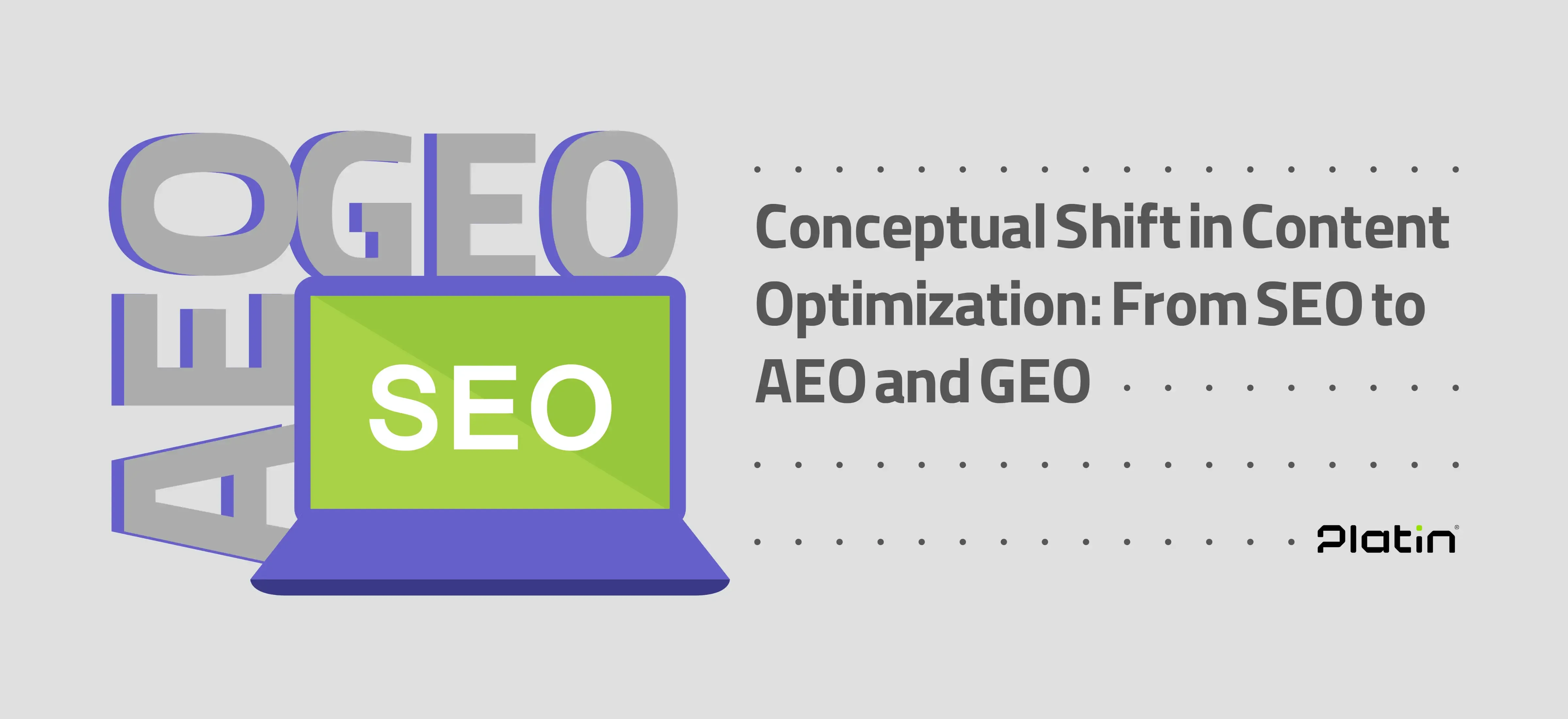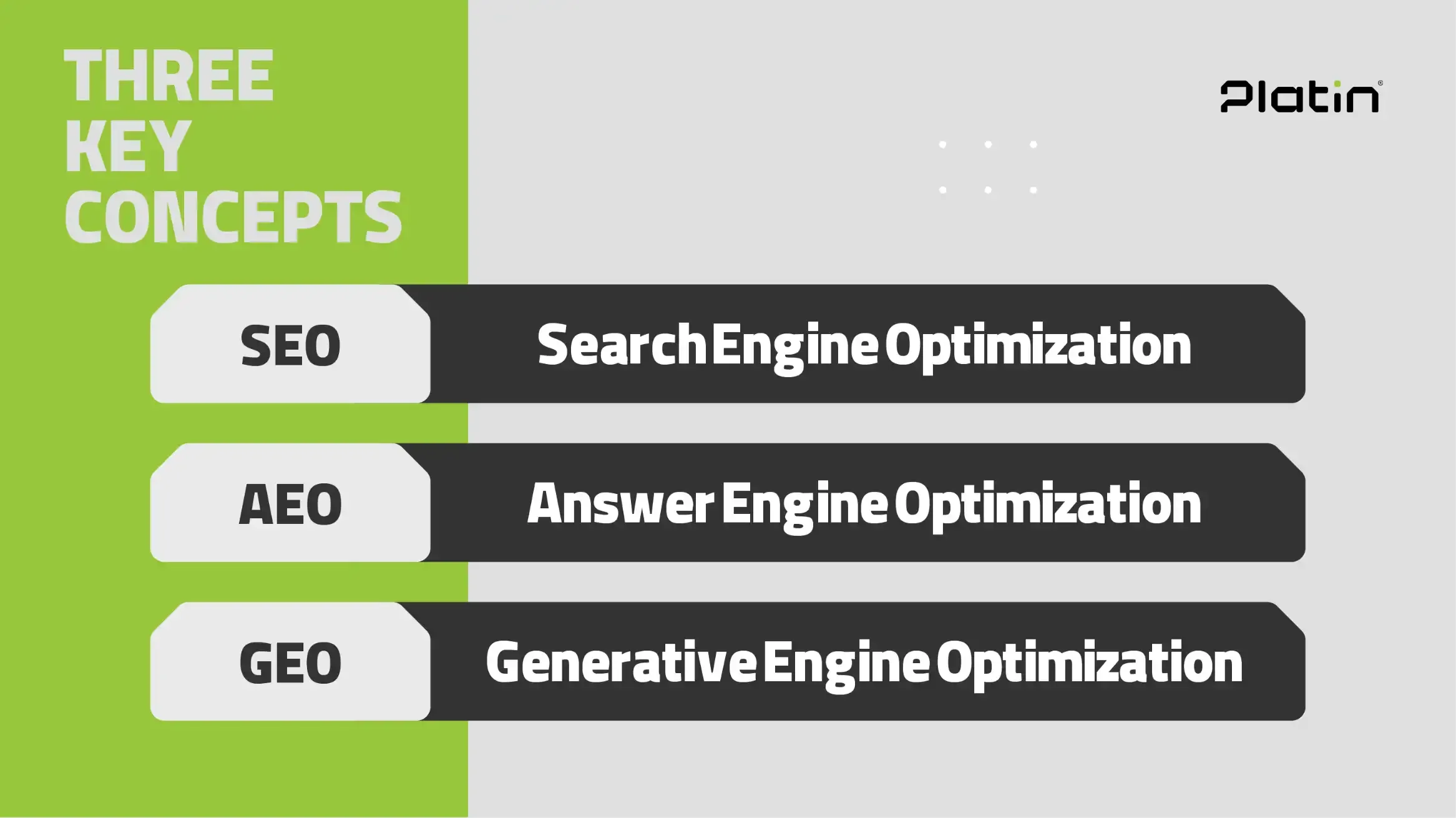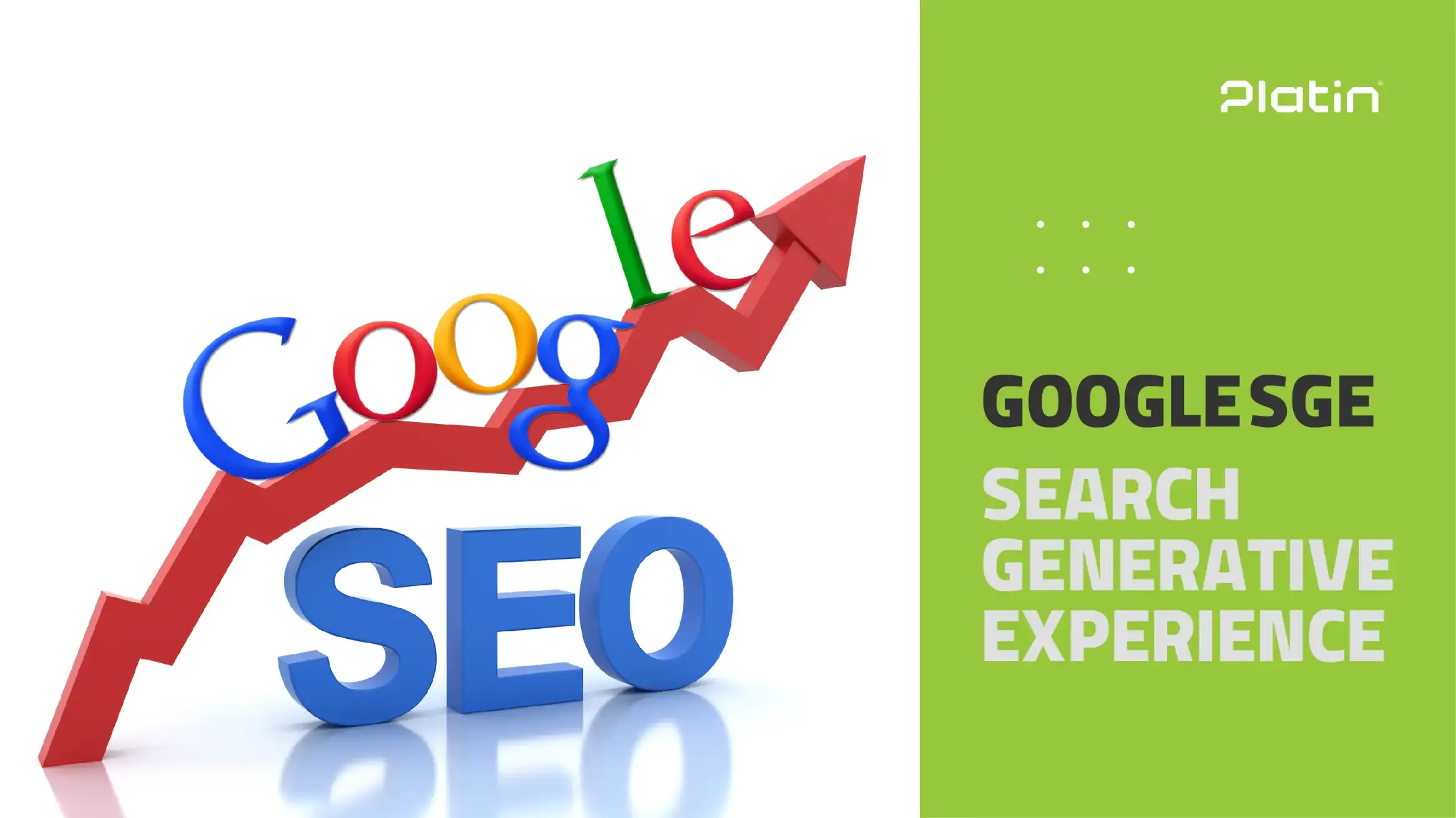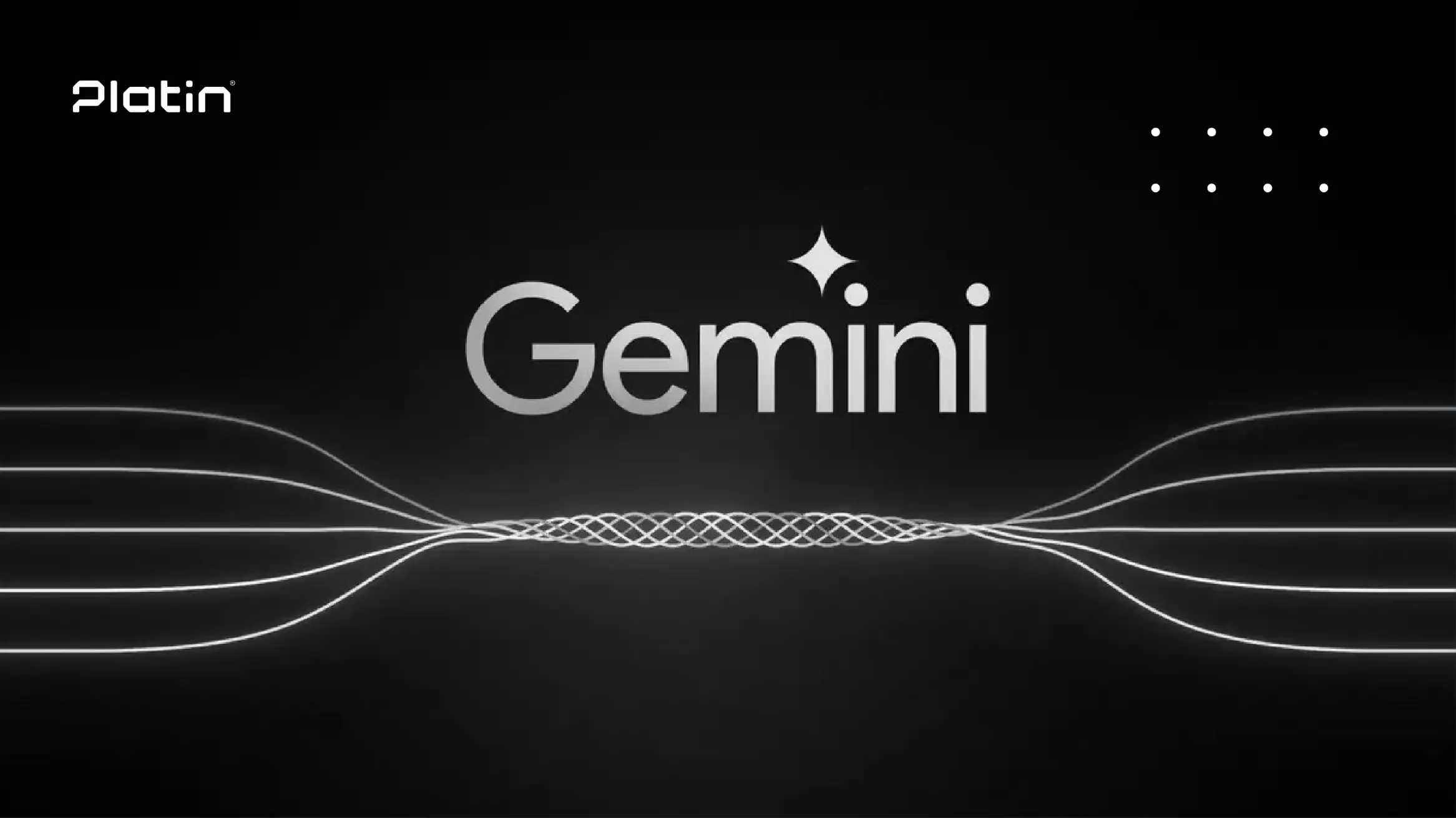Conceptual Shift in Content Optimization: From SEO to AEO and GEO

Introduction
Today, relying solely on keyword search in traditional search engines is no longer sufficient to meet the diverse needs of users. Search has evolved into a complex, intelligent, and dynamic process that, with advancements in artificial intelligence, is moving toward deeper and more personalized experiences. Users demand precise answers, relevant analyses, and an accurate understanding of their needs. This shift in user behavior has led to the development and expansion of Search Engine Optimization (SEO). However, in the modern era, relying on SEO alone is not enough for business growth and success. In this context, two emerging concepts—AEO and GEO—have been introduced to complement and enhance SEO. In the following sections, these two concepts will be analyzed and compared.
Overview of the Three Key Concepts:
- SEO (Search Engine Optimization): The foundational optimization approach that focuses on ranking in organic search results, utilizing keywords and link-building, aiming to increase the visibility of website content.
- AEO (Answer Engine Optimization): A newer content optimization approach that aims not just for visibility but for delivering fast and precise answers in answer-focused engines such as Google SGE and voice assistants.
- GEO (Generative Engine Optimization): The latest stage in content optimization, focusing on visibility in responses generated by AI-powered generative engines like ChatGPT, Gemini, and Perplexity.

A Deep Dive into SEO
SEO refers to a set of techniques and strategies aimed at improving the ranking and visibility of web pages in organic search results (such as Google, Bing, Yahoo, etc.). Rather than paying for advertisements (e.g., Google Ads), SEO seeks to attract users organically by improving content quality, technical site structure, and off-site signals such as backlinks.
It is important to note that modern web optimization is no longer solely "keyword-focused"; it has shifted toward semantic search and interaction with answer and generative engines (AEO and GEO). Nevertheless, SEO remains the foundation of all content optimization. Without it, content cannot be expected to appear in search results, be presented as an answer, or serve as a reference in generative engines. In essence, SEO is the gateway through which valuable content enters the digital space, forming the basis for credibility, organic traffic growth, brand development, and user trust.
However, SEO faces challenges such as overemphasis on keywords, frequent algorithm changes, intense competition in search results, the growing impact of AI, decreased organic click-through rates due to answer engines like Google SGE and Answer Boxes, and the increasing difficulty of acquiring authentic backlinks. Therefore, brands focusing solely on ranking risk falling behind, while those strengthening user experience, content depth, and technical structure simultaneously can capture a larger share in the new era of search.
A Deep Dive into AEO and GEO
Definition of AEO
AEO, or Answer Engine Optimization, is an approach to content production that, instead of focusing solely on keywords, aims to provide precise and structured answers to user queries. This model is especially important for display in tools such as Google SGE (Search Generative Experience), voice assistants like Siri and Alexa, and query-focused tools like Bing AI. AEO goes beyond traditional SEO, as its primary goal is to have content appear directly in Google’s or AI’s answer boxes rather than just improving rank in search listings.

Key Elements of AEO
- Utilizing question-and-answer structures (FAQ)
- Implementing FAQ Schema for better content structure recognition by search engines
- Providing short, clear, and precise answers instead of lengthy or ambiguous content
- Using synonyms and natural language processing (NLP) to communicate more effectively with language algorithms

Importance of AEO
AEO increases content visibility without requiring clicks, as many users receive their answers directly in primary search results. In other words, users can read necessary information from Google’s answer boxes, such as Quick Answer, without visiting the publisher’s site.
Content displayed in this position is effectively recognized as an “official answer” by Google. This visibility is also a prerequisite for presence in generative engine responses (GEO), as language models like ChatGPT first identify and evaluate content presented as answers in Google before using it.
Moreover, AEO enhances engagement rates and strengthens brand credibility, as brands appearing in instant answers are perceived as more trustworthy.
Challenges and Considerations in AEO
Challenges include fierce competition for the answer spot, as only one answer is selected, which must be precise, credible, and structured. Additionally, results are unstable; content may occupy the answer position today and be removed tomorrow. Inaccurate or unreliable content is heavily penalized by intelligent engines, which respond very negatively to misinformation.
Definition of GEO
GEO, or Generative Engine Optimization, is an approach that de-emphasizes keyword focus and optimizes content for visibility in generative engines like ChatGPT, Gemini, Claude, Copilot, and Perplexity. Unlike SEO, which aims to improve content ranking in Google search results, GEO seeks content visibility in responses generated by AI engines or its use as a source.
Key Elements of GEO
- Context-rich Content: Providing precise, analytical, and logically structured information aligned with user needs and search intent
- Credible Citations: Referring to reliable sources such as scientific journals, specialized websites, or official documents to enhance content authority
- Guidance Files for LLMs: Providing specific instructions to large language models to access important content
- Brand Mentions: Including the brand name descriptively or referentially, even without direct links, to increase visibility by generative engines
Importance of GEO
Previously, users typed questions into Google and searched among suggested links for answers. Today, with the prevalence of generative AI tools, users ask their questions directly to engines like ChatGPT. These models generate answers based on content they have learned from the internet and trusted sources. If content is not understandable, credible, precise, and structured, the likelihood of it appearing in outputs is almost zero—even if it ranks highly on Google.
Challenges and Considerations in GEO
A major challenge is the lack of clear metrics and analytical tools to measure the impact and performance of GEO optimization. Content must be highly accurate, referenced, and context-rich, as generative engines do not use superficial or clichéd content. Even if content is used, models may reference it without mentioning the brand, author, or providing a direct link—a key challenge in GEO.
Comparison of AEO, GEO, and SEO
SEO, AEO, and GEO each target different audiences, employ distinct tools, and use specific evaluation metrics. SEO focuses on traditional search engine users and aims to improve content ranking in organic search results. Analytical tools like Google Search Console, Ahrefs, and Moz measure metrics such as CTR, keyword position, and bounce rate.
A key critique of SEO is its keyword-focused approach, which can overlook user intent, semantic content cohesion, and user experience. AEO and GEO address these limitations by responding to new user needs and modern search structures.
AEO focuses on fast and precise responses in answer-focused engines like Google SGE or voice assistants. Tools like Schema.org, FAQ structures, and semantic markup help content appear in Answer Boxes, emphasizing user intent and semantic structure to overcome the limitations of keyword-based SEO.
Role of KOLs in AEO and GEO
Key Opinion Leaders (KOLs) play a complementary role in AEO and GEO. In GEO, which focuses on generative engines like ChatGPT and Gemini, referencing content created or endorsed by KOLs can significantly boost content credibility and increase the likelihood of selection by generative engines.

In AEO, which emphasizes structured content, markup, and fast answers, KOL involvement is not essential but can be supportive. For instance, if a technically complete structured answer is also endorsed or produced by a KOL, the chance of it being selected in answer boxes increases. Combining AEO and GEO strategically with KOL content can greatly enhance content strategy effectiveness.
Conclusion
GEO, as the next generation of optimization, moves away from keyword-centric approaches and focuses on generative engines like ChatGPT, Perplexity, Gemini, and Claude. Content must be produced in a way that language models recognize it as a credible source for generative responses. Unlike SEO and AEO, GEO lacks widely available analytical tools, and content effectiveness is mainly evaluated qualitatively through its representation in AI-generated outputs.
In today’s digital world, search is no longer limited to finding web pages; it has become an interactive, answer-focused, AI-driven experience. While SEO remains the foundation for content visibility, it alone cannot meet new user needs and technologies. Emerging concepts like AEO and GEO complement SEO and chart its future direction. AEO, focusing on precise and structured answers, and GEO, targeting visibility in AI language model outputs, have created a new horizon in content optimization. Brands that integrate these three approaches intelligently and cohesively will achieve not only search result visibility but also a durable, trustworthy, and meaningful presence in the minds of users and AI models alike.
References